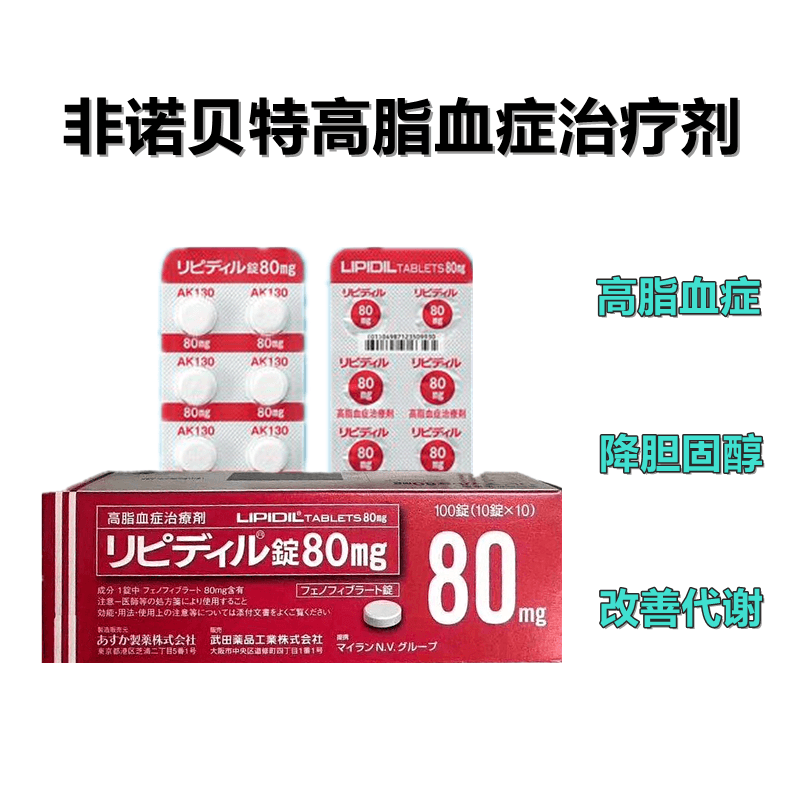What is Hyperlipidemia?
Hyperlipidemia refers to abnormally elevated levels of lipids such as cholesterol and triglycerides in the blood. It is a major risk factor for atherosclerosis, coronary artery disease, and stroke. Often asymptomatic for years, hyperlipidemia silently damages blood vessels and has earned the name “silent killer.”
Common Types of Hyperlipidemia
Hypercholesterolemia: Elevated levels of LDL cholesterol (“bad” cholesterol).
Hypertriglyceridemia: High triglyceride (TG) levels, which in severe cases may trigger pancreatitis.
Mixed Hyperlipidemia: Multiple lipid abnormalities present simultaneously.
Hyperlipidemia is commonly found in people who are sedentary, consume fatty or sugary diets, are overweight, or have a family history of lipid disorders. Regular lipid panel screening is recommended for adults over 30.
Intervention: Combine Lifestyle Changes with Medication
1. Lifestyle Modifications
Dietary Adjustments: Reduce intake of animal fats, sugary foods, and fried items.
Physical Activity: At least 150 minutes of moderate-intensity aerobic exercise per week.
Weight Management: Losing weight can significantly improve lipid profiles.
Quit Smoking and Limit Alcohol: This helps raise HDL (“good” cholesterol) levels.
For people with mild to moderate hyperlipidemia, lifestyle modification is the first-line treatment. If lipid levels remain abnormal after 3 to 6 months or are severely elevated, medication should be considered.

高血脂症 红降血脂 高血脂专用药 红降脂Lipidil 非诺贝特片 80mg:100片 降胆固醇 改善代谢
? Medication Therapy: Understanding Fenofibrate (フェノフィブラート)
In Japan, Fenofibrate (Lipidil) is a commonly prescribed lipid-lowering medication, especially effective for patients with elevated triglycerides or mixed hyperlipidemia.
? Basic Information
Active Ingredient: Each tablet contains 80 mg of fenofibrate.
Main Effects:
Reduces triglycerides (TG)
Lowers LDL cholesterol ("bad" cholesterol)
Increases HDL cholesterol ("good" cholesterol)
Indications:
Primary hyperlipidemia
Familial hypercholesterolemia
Dosage: Typically taken once or twice daily after meals.
⚠️ Possible Side Effects
Common side effects may include:
Gastrointestinal symptoms (e.g., bloating, nausea)
Skin issues such as itching or photosensitivity
In rare cases, gallstones or liver dysfunction
Seek immediate medical attention if you experience right upper abdominal pain, jaundice, or dark-colored urine.
✅ Usage Recommendations
Always use under medical supervision
Regularly monitor liver/kidney function and blood lipid levels
Maintain a healthy diet—do not rely on the medication to "offset" poor eating habits
If combined with statins, closely follow your doctor's instructions to avoid the risk of rhabdomyolysis (a serious muscle condition)
? Practical Tips
Condition Recommendation
Elevated triglycerides only Fenofibrate shows excellent results, better than statins
High LDL only Prioritize statins; fenofibrate may be added if needed
Mixed hyperlipidemia Requires personalized treatment—fenofibrate is important
Kidney or liver disease Use with caution; frequent function monitoring is essential
? Summary
Hyperlipidemia often has no symptoms, but the risks are real and serious.
Lifestyle intervention is the foundation, but medication provides necessary support.
Fenofibrate (フェノフィブラート) from Japan is proven effective across various types of dyslipidemia.
Always follow your doctor’s guidance, go for regular checkups, and never adjust your dosage without medical advice.
